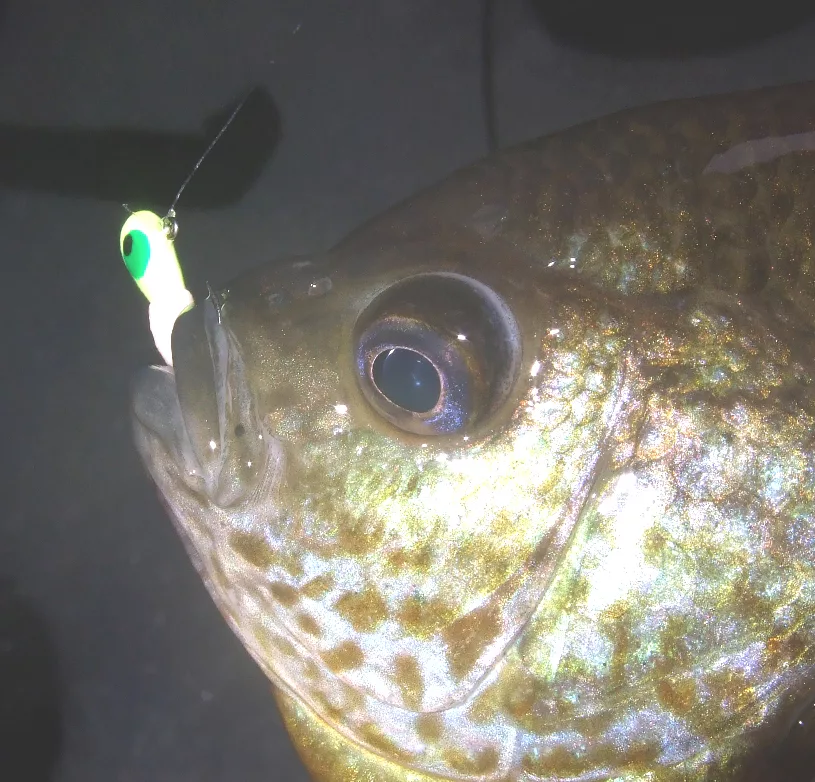
The variables of ice fishing can be seen as a game, comparable to any other puzzle. Put the pieces together for success, no matter what you’re angling for at first ice. Simonson Photo.
By Nick Simonson
Like millions of other people, I discovered the online game Wordle during the pandemic and played it relentlessly during lockdown, amazed in part that someone would make a program you couldn’t binge and play over and over, and instead gave you only one shot each day to do it. That facet certainly makes a person pause and give the day’s challenge a bit more consideration. Since that crazy time, Wordle has become as much a part of my morning routine as a full tumbler of coffee and a walk around the neighborhood with my dogs and serves as a bit of a wakeup call for my brain before I set to work on morning writing projects or legal tasks or one of the many other irons I voluntary have warming up in the day’s fire.
I’m not a mathematically gifted mind, and generally don’t do well with number puzzles like Sudoku, but there’s just enough phonics, wordplay, and occasional reference to pop culture hidden in each day’s answer that it still provides a challenge with a bit of a slant to my strengths. The variables are fixed – 26 letters, five spaces, and six guesses – and I start with a five-letter word that has four vowels in it, which I know will likely never produce the coveted one-guess-solve, but yesterday’s set me up for a correct answer on turn two, and put me at 70 straight wins in the six-guess limit, edging me closer to my all time best of 74 which has stood since prior to the vaccine. This weekend, while on first ice and reveling in the quick win, I found myself thinking that ice angling was a lot like Wordle.
The variables are fixed for each water: size of the lake, nature of the water, prey items, fishable species, time of day, and weather conditions are some of the major ones that factor into each trip; the vowels that are part and parcel of each solve on the ice, if you will. Additionally, adding the consonants to them to form the word of the day comes from things like bait choice, lure selection, line size, depth of presentation, speed of presentation, and covering the areas with those combinations to find fish, or moving on to the next most promising space. Much like reading and writing, and solving Wordle for that matter, putting them all together into a winning pattern produces success, and starting with those options that work best from prior experience – the R, S, T, L, N, E if you’re a Wheel of Fortune fan – and arranging them into combinations that connect builds each outing into a greater understanding of the world under winter’s hard water.
Location in ice angling is key and knowing transition areas, areas of isolated structure, or those places close enough (and safely far enough away) from incoming water like springs, creeks, runoff and so on, are key combinations, like solutions in Wordle that start or end with “SH” or “NK.” Putting together those items in combinations you’ve read before on a lake map, a sonar display, or even looking down the ice hole when sight fishing, gives you some go-to guesses to get started. Punching a bunch of holes and using an attractor lure, such as a rattle spoon or jigging rap, is the four-vowel word, getting some necessary letters out there, seeing where they fall in the possible solution to the puzzle, and maybe even getting you a jump start on success. Like a fun mental exercise, ice fishing has its own bounds with a twist of nature and sometimes moodiness of the fish involved as well, but knowing the variables and filling the slots with your best guesses can win the day.
If you don’t play Wordle, I suggest you give it a shot, or find one of the many games that have spawned from it over the past two years or so or tap into another puzzle that leans into your brain’s wiring. Better yet just go ice fishing now that the opportunity has arrived once again. By identifying the variables there – from the conditions of the day, the layout of the substrate, the types of food and the predator fish that eat them – you’ll be able to put together patterns over time, and with each season you’ll get better and better at finding the quickest way to solve the puzzle…in our outdoors.
